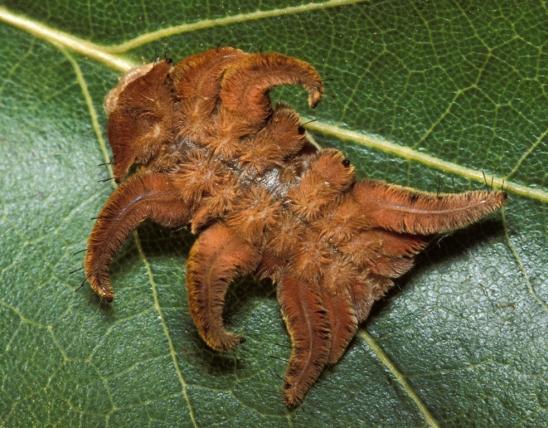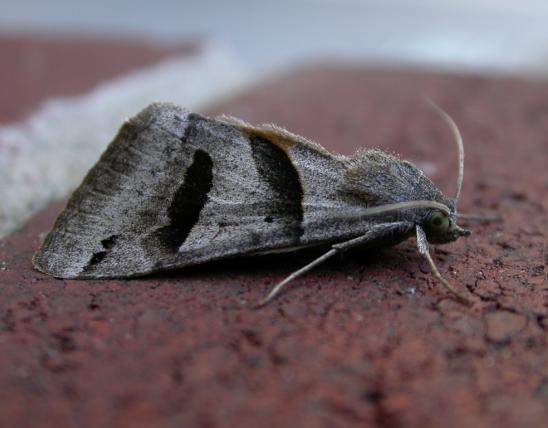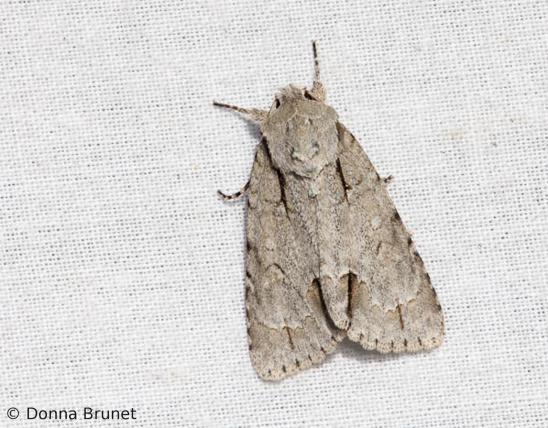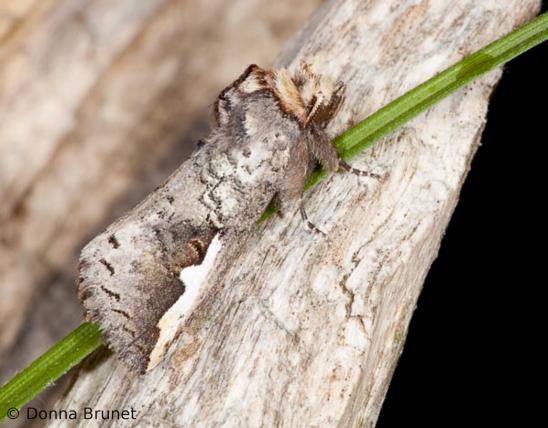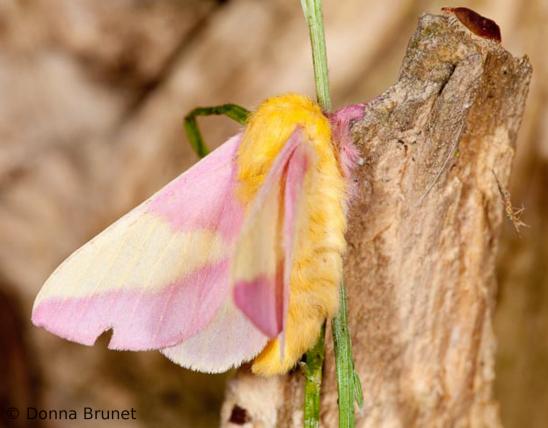
Adult flannel moths are chunky-bodied, and the bodies, legs, and wings are very hairy, giving them a fluffy appearance. Most are whitish, yellowish, or brownish, with few markings. The females have thin antennae and males have featherlike antennae; often, the two sexes have slightly different colorations, too.
Caution! The fuzzy, hairy, silky caterpillars in this moth family can sting. They do not actively attack people, but if you brush against these caterpillars, stinging hairs, hidden among nonstinging hairs, can poke into your skin and break off, and venom inside the hairs or spines can penetrate your skin (this is a lot like the spines of stinging nettle plants). Reactions vary depending on the type of caterpillar and a person’s individual sensitivity. Stinging, itching, burning, rash, lesions, dermatitis, swelling, even fever and even nausea can result.
Caterpillars of flannel moths differ from those of all other butterflies and moths by their number of prolegs. Prolegs are the fleshy, peglike legs along the abdominal segments (that is, behind the pointy, jointed thoracic legs at the front of the caterpillar). Flannel moth caterpillars have 7 pairs of prolegs, while all other butterfly and moth caterpillars have 5 or fewer pairs.
Caterpillars in many moth families have stinging or irritating hairs, but then again, not all hairy caterpillar species necessarily can irritate or sting. If you are uncertain about the identification of any hairy or spiny caterpillar, dead or alive, it’s best not to touch it.
Most US flannel moths are limited to the desert southwest or the extreme southeast (especially Florida). Apparently three species are likely to be found in Missouri:
- Southern flannel moth (Megalopyge opercularis) adults are golden yellow, grading to paler beige at the rear. The hairy legs are black. The caterpillars, called puss caterpillars, can appear teardrop-shaped. They reach about 1½ inches long and are densely covered with fine gray or tan hairs that taper in back to form a tail. A crest of rusty hairs rise up along the back of the caterpillar, and a few patches of whitish hairs occur in tufts along each side of the back ridge. They eat leaves of a variety of deciduous trees and shrubs. They look like kitty cats, but do not touch them — their stings can be intense, to the point of requiring medical attention.
- Black-waved flannel moth, or crinkled flannel moth (M. crispata) adults are cream-colored with black, wavy lines along the leading edge of the forewing. Leg tips are black. Males are more intensely colored, females are paler. The caterpillars look a lot like those of the southern flannel moth, but they lack the “tail” of hairs extending from the rear. Hairs can be long and wispy or short and rather crinkly. Colors can vary widely, from white to cream to caramel to red. They feed on a wide variety of trees and shrubs, including oaks, plums, sassafras, willows, and more.
- White flannel moth (Norape ovina) adults are all white and are very hairy around the head and thorax. Males have yellowish, featherlike antennae. The caterpillars reach about 1¼ inches long and look polka-dotted with yellow on black. Basically, they are yellow with a wide dark stripe down the back. On the black stripe are 2 rows of yellow raised circles bearing clusters of short hairs. There are additional clusters of hairs along the sides. Longer hairs occur sparsely over the entire body. It eats leaves from a variety of trees, especially redbud, honey locust, hackberry, and mimosa.
Habitat and Conservation
Food
Life Cycle
Human Connections
If you are “stung” by one of these caterpillars, wash the area to remove any stinging hairs or toxin that remain on your skin. You can also try applying tape to the area, sticky side down, then removing it to pull the hairs out of the skin; repeat with fresh pieces of tape until the spines are gone. Using an ice pack can reduce swelling, and steroidal lotions or creams (such as hydrocortisone) can help with discomfort and swelling. Applying a paste of baking soda and water can be helpful. If you know that you are sensitive to insect stings, or if the pain or swelling is intense, worsens, is badly blistered, or doesn’t go away within 1 to 12 hours, consult a doctor.
It seems like a cruel hoax — that something so invitingly soft and fuzzy can zap us with irritating stings. But it’s a reminder that the natural world does not always follow our preferences, and it functions according to a logic we don’t always see.
Ecosystem Connections
The stinging hairs on flannel moth caterpillars function, of course, for defense. A bird, mammal, or other predator attempting to eat one of these hairy creatures will be powerfully dissuaded by immediate stinging and burning. This allows the caterpillar to continue feeding in peace.
The hairs probably also serve to help the caterpillar regulate its body temperature and hydration levels, since they must help insulate, shade, and buffer the effects of strong wind on the tender body within.
























